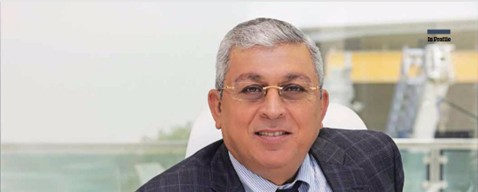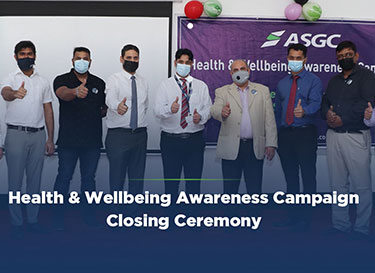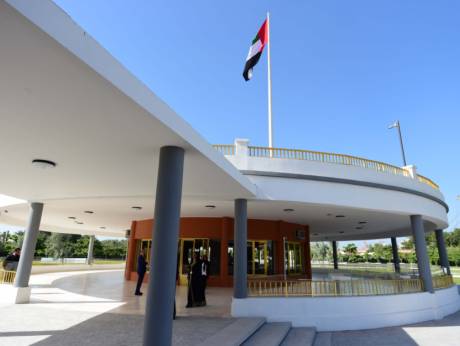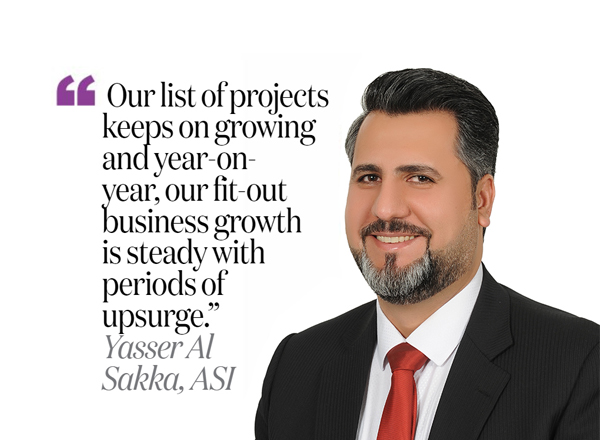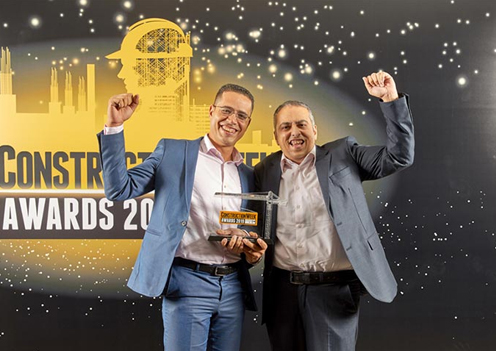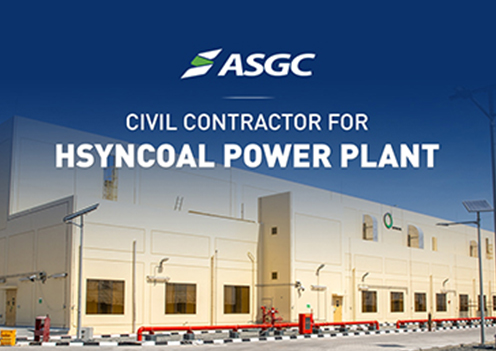Site Visit: The Onyx
Mixed-use development is set to be jewel in the crown for Saudi developer Ishraqah
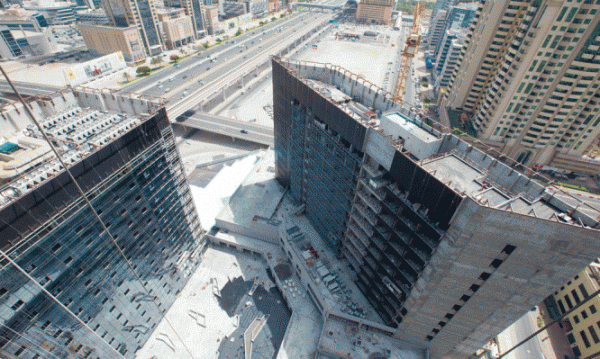
Dubai’s Sheikh Zayed Road has long been home to some of the city’s most visible and important architectural projects, starting from the now-iconic Dubai World Trade Centre, continuing past the gargantuan Mall of the Emirates, and through to the neck-craning heights of Dubai Marina and Jumeirah Lakes Towers as it stretches down all the way to Abu Dhabi.
Due to the nature of the buildings along its length, real estate along the highway is amongst the most valuable and sought-after in Dubai. Having a building, a showroom, a residence or a business along it is an easily acknowledged sign that you’re a pretty big deal.
Perhaps this is why there have been a spate of mixed-use developments come up alongside it in recent years, with perhaps the most visible being the massive multi-billion dollar Habtoor City, which consists of three hotels, a Las Vegas inspired theatre complex and three residential towers. Other developers are also catching on, with a number of projects either under construction or in the planning stages.
One project that has consistently caught the eye since it was first announced, is the Saudi Arabian-owned mixed use development, The Onyx. Situated between the Greens residential community and Emaar Business Park on Sheikh Zayed Road, the plot covers a total area of 22,018sqm, holds three towers that contain high-end offices, residences and a luxury hotel.
Developed by Ishraqah, the real estate developer formed through a partnership between the Saudi companies Zahran Group and Bin Mahfouz Group, the $354 million flagship project is set to be a major hit on the Dubai real estate market, with properties going on sale in February of this year to strong interest.
With main contractor Al Shafar General Contracting having announced the completion of structural works at the end of April 2015, Big Project ME was invited by the contractor to visit the Onyx construction site earlier this summer to get a first-hand look at this impressive development.
“The Onyx is a chance for our client to build its reputation in the UAE as it is the first project of this scale that they’ve undertaken,” says Makar Elia, ASGC construction manager for the Onyx project, in an interview at the site offices.
“This massive project broke ground in 2013 and it has been progressing on schedule, with planned completion in 2016. The three building complex and associated facilities will showcase the uncompromising quality of ASGC work. With its prestigious location and high visibility along Sheikh Zayed Road, the Onyx is being built to the highest standards and quality of materials and finishing,” he asserts.
Breaking down the project details reveals just how complex a task it was to build the Onyx project. The three towers on the plot consist of two towers, standing at 16-storeys and 25-storeys respectively, and a third tower which is intended to be a 14-storey business hotel with 210 keys. The two office towers will also contain ground floor retail units, while the 25-storey tower will also house residential units in its upper floors.
Not only did the Elia’s team have to contend with managing the construction of what is essentially three construction sites in one, but they also have had to deal with a number of constraints in terms of space and work timings, given the surrounding residential and commercial buildings. However, as Elia explains, the contractor’s expertise in urban construction meant that they were able to find ways to surmount the issues.
“The location of the site is within a very densely populated area. However, ASGC has extensive experience building in urban settings. We have successfully completed projects in Dubai Marina, Business Bay, Jumeirah, and Bur Dubai and so on,” he says.
“As always, all necessary precautions were taken in order to minimise disruption to local residents, businesses and traffic. For the Onyx specifically, we had the site offices and materials storage site not directly adjacent to the main site, which created additional logistical challenges. We overcame those challenges by precisely utilising a ‘just-in-time’ material delivery system, as well as carefully timed work shifts.
“For example, concrete pouring was always scheduled for low-traffic times and our work hours do not include night shifts so as to not disturb the residents living nearby.”
Yet another challenge facing the construction team from ASGC is the proximity of the Dubai Metro, which runs parallel to Sheikh Zayed Road, and is literally a stone’s throw away from the site. This obviously posed some taxing questions to the team.
“The proximity of the Dubai Metro added an additional layer of consideration for us when moving equipment, but we successfully and painlessly coordinated with the RTA, explaining our logistical needs, so that there were no disruptions to either our schedule or to traffic in the vicinity of the project.”
Coupled with these in-built restrictions were the government mandated reductions in working hours during the summer months of the year. In addition, the last two years have seen Ramadan occur during the summer, further complicating an already complicated work schedule. While one would assume that a contractor would struggle in this scenario, Elia is quick to highlight ASGC’s adaptability and resourcefulness.
“The summer season has always been a challenging period for construction. This, coupled with the Ramadan holidays indeed shortened the work days. We were able to overcome this by smartly leveraging our assets from different construction sites in Dubai and slightly increasing the workforce employed on the Onyx site.
“In fact, the length of the work day has not been the only restriction we faced at the Onyx site. Environmental and air-quality guidance and regulations have been strictly followed during the construction phase. Noise and water pollution issues have been dealt with no compromise as well,” he adds.
Environmental considerations were a major focus for the ASGC team, with waste management onsite being a daily operation. The site had a dedicated area where the crews could shift all waste debris and ensure the separation of building materials so as to maximise the recycling value of the project refuse. The separated waste material was then shifted to Dubai Municipality for treatment and/or recycling, ASGC says.
When asked how the other challenges facing the project were overcome, Elia doesn’t hesitate to praise the work done by all the stakeholders on the project. With as many as 40 specialised subcontractors used onsite in total, the key theme running through the site was cooperation and accountability from all stakeholders.
“A project of this scale necessitates the involvement of many specialised companies. As a main contractor, ASGC appointed and coordinated with around 40 subcontractors that were involved in different stages during the construction.
“In order to achieve the best quality possible, we subcontracted regional industry leaders for crucial aspects of the project – such as MEP, BMS, PMU, elevators, ceiling works and so on. The mix of subcontractors included well established local companies as well as international conglomerates,” the construction manager says. “For example, Kone was appointed for elevators, Johnson Controls for BMS and ALUMCO for façade works.”
Given the number people involved in the construction process, Elia highlights simplicity as the key to the success of the project.
“The coordination process was straightforward,” he says. “We held technical meetings (regularly) and if there were any clarifications or corrections, we would hold meetings with the individual subcontractors, with the project management team and with the engineer to sort out and minimise any loss of time.
“We made sure that there was full cooperation with our technical teams, with the engineers and the management. There would be weekly meetings with the subcontractors, the client and the management, so as to sort out any obstructions or circumstances that we faced,” he outlines.
In addition, the team worked closely with the developers of the project, taking care to ensure that all activities onsite were carefully coordinated, and that the rules and regulations were followed by all members of the build team, from workers through to supervisors and managers.
“We had a target programme and we saw to it that this target programme matched with our client’s programme, so as to achieve the project progress and to complete the project on time,” Elia says. “We’ve had to increase the workforce during the last few months to counter the shortened workday. This was done in a gradual manner so that the new arrivals had time to adjust to the new site.”
All told, at the peak of construction on the project, there were 1,500 workers onsite, both from the main contractor and the various subcontractors. Managing the health and welfare of these individuals was a crucial aspect for ASGC, who have earned a reputation for being a HSE leader in the UAE construction industry.
In order to manage HSE operations on the site, a senior HSE officer was appointed specifically to oversee the project-wide implementation of the various HSE rules and procedures, reporting directly to the Group HSE director.
Furthermore, all high-risk activities were only performed by certified personnel, with equipment used on site third-party certified and checked for safety, the company tells BPME. This extended to all rented equipment, such as the hoists.
“In terms of safety statistics, I can proudly declare that we have gone through six million man-hours without any near misses, let alone more serious accidents,” Makar Elia proudly states. “We have strictly followed Dubai Municipality and RTA rules and regulations in all our activities.
With nearly 80% of the project now completed and handover pencilled in for 2016, Elia and his team can look back with justifiable pride on the Onyx project, which is set to be a landmark project for both Ishraqah and ASGC.
“ASGC has once more been tasked to deliver a signature project and I could not be more proud to be part of it. The Onyx will become an integral part of the New Dubai landscape and it will inevitably increase the appeal of the Dubai Media City and TECOM area.
“The project itself is a work of art and I predict it will become a favourite place for residents and visitors of Dubai,” Makar Elia states confidently.
